OK, we are nearly halfway into 2012, and I still haven’t started working on the new design competition that I mentioned late last year. I still need to decide on the details and find a company to provide a prize for the winner, but it is going to happen (once I can find a little free time). There are some great topic ideas that have been suggested by readers, and you still have time to leave additional comments with ideas for the contest. As some have suggested, I am going to let you all decide the winner of this next competition. I will still assemble a jury to narrow down the entries to 10 or so finalists, but from there, the winner will be decided based on your votes.
After the finalists and winner were announced in the first Bicycle Design competition in 2008/2009, I posted quite a few of the other entries. I didn’t post them all though, so I want to go back and share a few more of those old entries today. For the first two, the designers’ text from the entry is included to describe the concept. The third concept, by Jeff Kaminsky, has all of the text included in his image boards.
Ryan Lee’s commuter bike
The images created for this concept were to show ideas for refinement and development rather than styling. I commute to and from work on my bike and found the following issues a concern:
-Juggling the lock, and the bike, and the cable when I arrive/leave the bike rack
-Having the lock wrapped around my bars/frame/etc.
-Having add on lights that are not integrated, need battery changes and can be easily stolen
-Oiling the chain after days of rain, and the chance of getting oil on my clothes
-Increasing the potential of theft by having the fancier looking bike in the rack
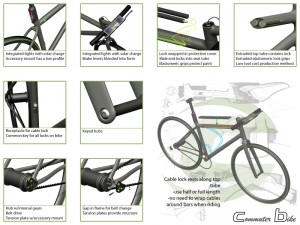 The concept ideas address these, and are feasible enough that developing and refining them do not seem a stretch of the imagination. An inconspicuous diamond frame lets the bike blend in with others. A cable lock resides in an extruded top tube profile (low tooling costs). This cable lock is held in place by an elastomeric extrusion and female receptacle. A second, locking female receptacle is on the seat tube. The key for this lock is the same as the locks on the hubs. Integrated, solar powered lights reduce accessory theft. A belt driving a hub with internal gears reduces maintenance concerns.
The concept ideas address these, and are feasible enough that developing and refining them do not seem a stretch of the imagination. An inconspicuous diamond frame lets the bike blend in with others. A cable lock resides in an extruded top tube profile (low tooling costs). This cable lock is held in place by an elastomeric extrusion and female receptacle. A second, locking female receptacle is on the seat tube. The key for this lock is the same as the locks on the hubs. Integrated, solar powered lights reduce accessory theft. A belt driving a hub with internal gears reduces maintenance concerns.
Cengiz Ekmekci’s Logic Bike
Some of the design goals of this project includes:
-provide unique qualities that would attract not only current bike users’ attention but also non-biker’s as well.
-user friendliness with easy maintenance
-adjustability for all sizes of people.
-5 speed (in the hub), automatic control*
 -The bike requires 1 compact Li-on battery, which is located in the Frt. Frame. Electric charge for the battery is provided by in frt. Hub generator.
-The bike requires 1 compact Li-on battery, which is located in the Frt. Frame. Electric charge for the battery is provided by in frt. Hub generator.
– It is fair to say that popular 24, 18 speed manual systems in the market are not being used with a clear understanding. In that sense, automatic system can re-revolutionize the way the bikes are conceived.
*Detailed info on automatic control system is not provided (due to the fact that it is not registered for a pattern yet). 5-speed manual system can be considered as optional as well.
Jeff Kaminsky’s recycled Cycle

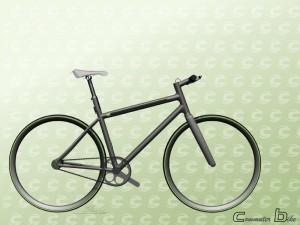
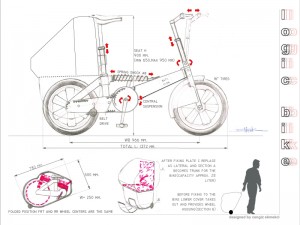
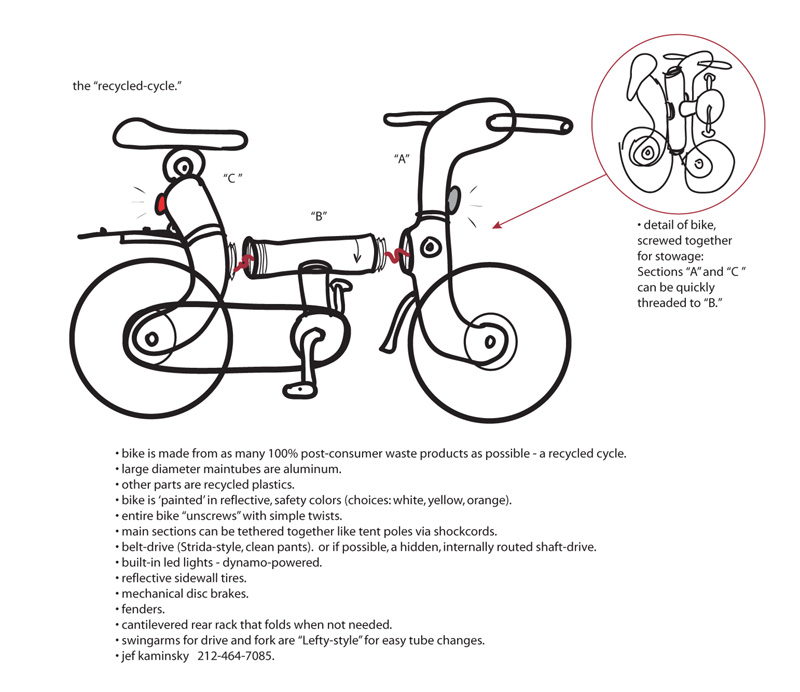
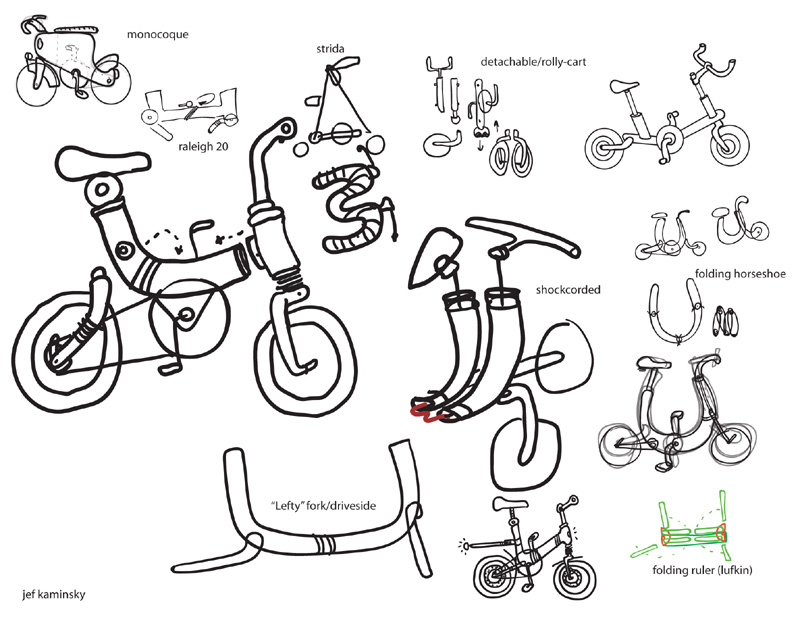
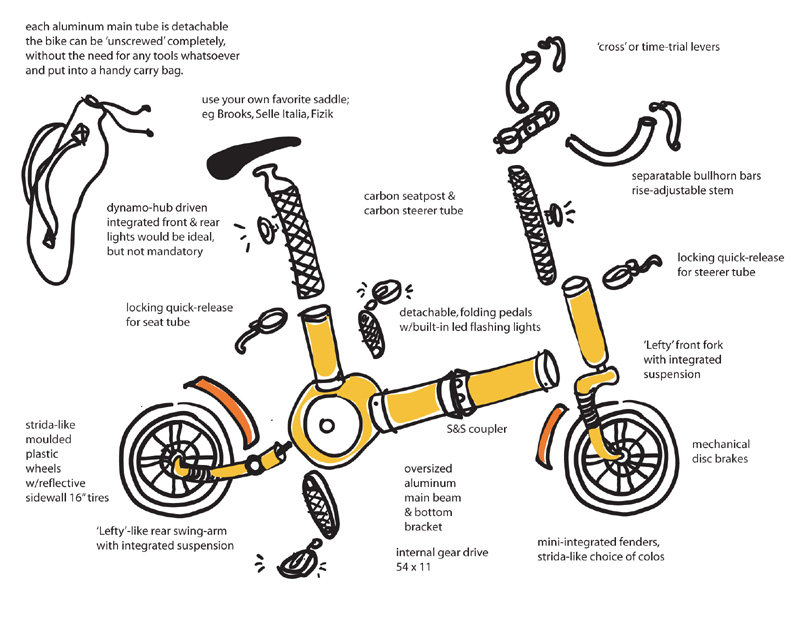
Leave a Reply to Ed Cancel reply